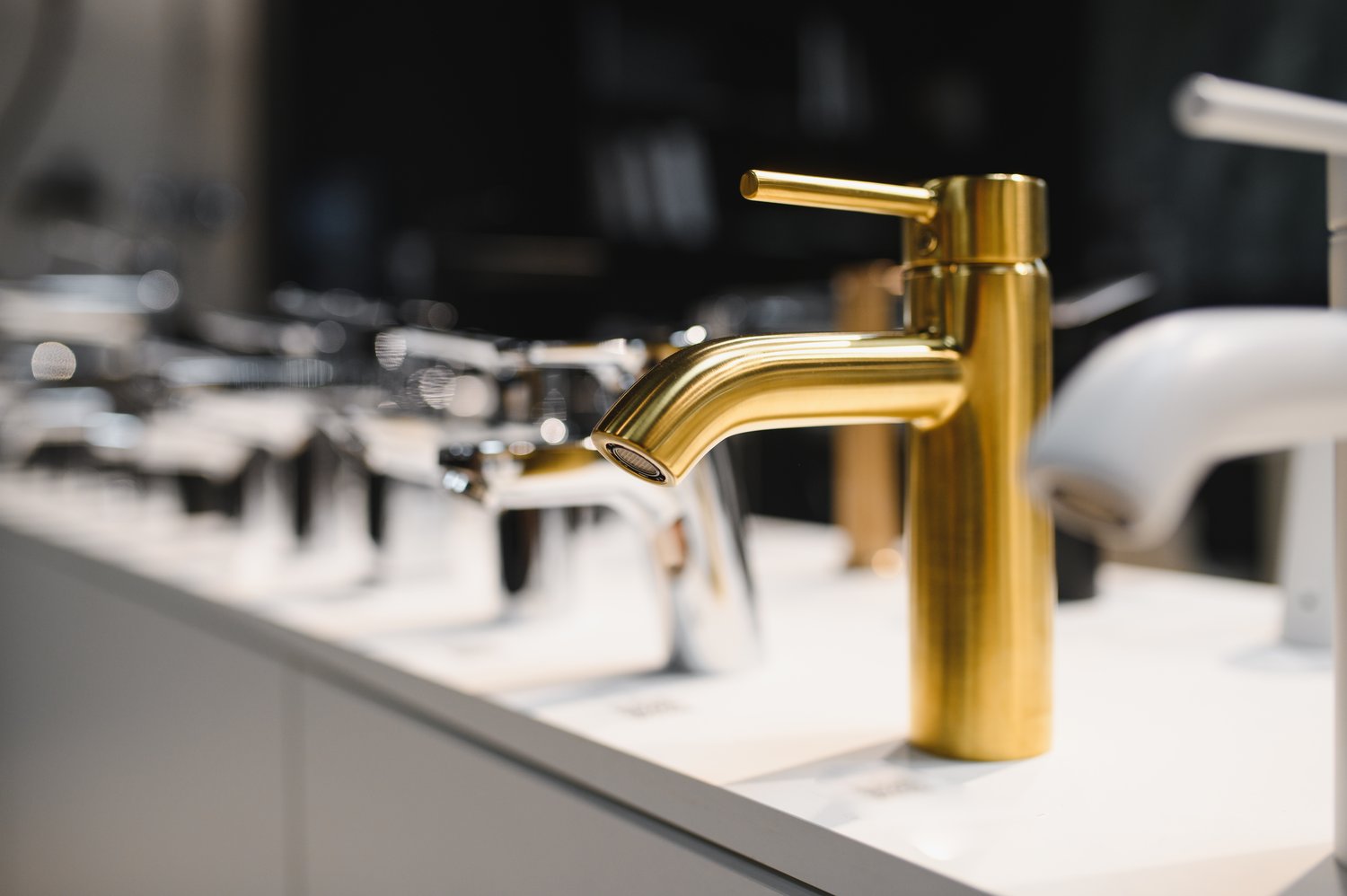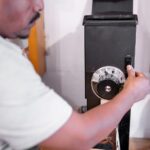Understanding bathroom faucet basics
Bathroom faucets are essential fixtures in any home. They come in various styles, finishes, and functionalities. The average lifespan of a bathroom faucet is 15-20 years. Proper maintenance can extend this lifespan significantly. Bathroom faucets typically use 1.5 gallons of water per minute. This flow rate is regulated by federal standards to promote water conservation. There are three main types of bathroom faucets: single-handle, double-handle, and hands-free. Each type has its own advantages and considerations for installation.
When selecting Bathroom faucets https://onninen.pl/en/products/Kitchen-and-bathroom/Bathroom-equipment/Bathroom-faucets, consider the existing plumbing configuration. This can affect your choices and installation costs. The most common finishes for bathroom faucets are chrome, brushed nickel, and oil-rubbed bronze. These finishes vary in durability and ease of cleaning. Some faucets come with special coatings that resist water spots and fingerprints. This feature can make maintenance easier and keep your faucets looking new for longer.
Installation of bathroom faucets can be a DIY project or require professional help. The complexity depends on the faucet type and your plumbing setup. Most faucet installations take between 1-3 hours. Always turn off the water supply before beginning any faucet installation. It’s crucial to have the right tools on hand, including adjustable wrenches and plumber’s tape. Following manufacturer instructions carefully can prevent leaks and ensure proper function.
Water pressure is an important consideration when choosing bathroom faucets. The ideal water pressure for most faucets is between 40-80 PSI. Low water pressure can result in weak water flow, while high pressure can cause splashing. Some faucets come with built-in pressure regulators to help manage this issue. These regulators can be particularly useful in homes with varying water pressure throughout the day.
Energy efficiency is another factor to consider when selecting bathroom faucets. WaterSense-labeled faucets use 20% less water than standard models. This can lead to significant water savings over time. Some faucets also incorporate aerators, which mix air with water to create a fuller stream while using less water. These features not only save water but can also reduce your energy bills by decreasing hot water usage.
Choosing the right faucet for your bathroom sink
Selecting the right faucet for your bathroom sink involves several considerations. The size of your sink and countertop space are crucial factors. A large faucet may overwhelm a small sink, while a tiny faucet might look out of place on a spacious countertop. Measure your sink’s pre-drilled holes before shopping. Most sinks have either one or three holes, which will determine the type of faucet you can install.
Standing washbasin faucets https://onninen.pl/en/products/Kitchen-and-bathroom/Bathroom-equipment/Bathroom-faucets/Standing-washbasin-faucets are a popular choice for modern bathrooms. These faucets sit on the countertop rather than being mounted to the sink or wall. They come in various heights, typically ranging from 12 to 16 inches. The height of the faucet should complement the depth of your sink. A taller faucet works well with a deeper sink, providing ample space for hand washing.
Consider the functionality you need from your bathroom sink faucet. Single-handle faucets are easy to use and take up less space. They’re ideal for small bathrooms or powder rooms. Double-handle faucets offer more precise temperature control and a classic look. They’re well-suited for larger vanities or double sinks. Some faucets come with additional features like pull-out sprayers or touch-activated operation.
The finish of your faucet should complement your overall bathroom design. Chrome is a popular choice due to its durability and ease of cleaning. It pairs well with most decor styles. Brushed nickel offers a softer look and is less prone to showing water spots. Oil-rubbed bronze provides a rich, traditional appearance but may require more maintenance to keep its luster.
When budgeting for a new bathroom sink faucet, consider both the initial cost and long-term value. Basic faucets can start at around $50, while high-end models can exceed $500. Higher-priced faucets often offer better quality materials and more durable finishes. They may also come with longer warranties, typically ranging from 5 to 20 years. Investing in a quality faucet can save money on repairs and replacements in the long run.
Selecting the perfect shower faucet
Choosing the right shower faucet can greatly enhance your bathing experience. Shower faucets https://onninen.pl/en/products/Kitchen-and-bathroom/Bathroom-equipment/Bathroom-faucets/Shower-faucets come in various configurations to suit different needs and preferences. The most common types are single-handle, dual-handle, and thermostatic. Single-handle shower faucets are easy to use and maintain. Dual-handle faucets offer more precise temperature control. Thermostatic faucets maintain a consistent water temperature, enhancing safety and comfort.
Consider the water pressure in your home when selecting a shower faucet. Low-flow shower heads, which use 2.0 gallons per minute or less, are ideal for homes with lower water pressure. They can help conserve water without sacrificing performance. For homes with high water pressure, pressure-balancing valves can prevent sudden temperature changes when other fixtures are used simultaneously.
The style of your shower faucet should complement your bathroom’s overall design. Modern designs often feature sleek lines and minimalist aesthetics. Traditional styles may include more ornate details and classic finishes. Some popular finishes for shower faucets include chrome, brushed nickel, and matte black. These finishes vary in their resistance to water spots and fingerprints.
Many shower faucets come as part of a complete set, including the showerhead, tub spout, and controls. These sets ensure all components match in style and finish. Some sets also include additional features like handheld showerheads or body sprays. When choosing a set, consider the size of your shower enclosure and the placement of existing plumbing.
Installation of shower faucets can be more complex than sink faucets. It often requires access to the plumbing behind the wall. Professional installation is recommended to ensure proper function and prevent leaks. The cost of installation can range from $100 to $300, depending on the complexity of the job. Always check that your chosen faucet is compatible with your existing plumbing to avoid additional renovation costs.
Maintaining your bathroom faucets for longevity
Proper maintenance of your bathroom faucets can significantly extend their lifespan. Regular cleaning is essential to prevent buildup of mineral deposits and soap scum. Use a soft cloth and mild soap for daily cleaning. Avoid abrasive cleaners that can damage the finish. For tougher stains, a mixture of equal parts vinegar and water can be effective. Apply this solution with a soft cloth and rinse thoroughly.
Leaky faucets waste water and can lead to higher utility bills. A faucet that drips once per second can waste up to 3,000 gallons of water per year. Check your faucets regularly for signs of leaks. Common causes of leaks include worn-out O-rings, corroded valve seats, and loose parts. Many minor leaks can be fixed with simple DIY repairs. However, persistent leaks may require professional attention.
The aerator, located at the tip of the faucet, can become clogged with mineral deposits over time. This can reduce water flow and affect the faucet’s performance. Clean the aerator every few months by unscrewing it and soaking it in vinegar for a few hours. Use a soft brush to remove any remaining debris before reattaching. This simple maintenance task can significantly improve your faucet’s efficiency.
Bathroom equipment https://onninen.pl/en/products/Kitchen-and-bathroom/Bathroom-equipment, including faucets, can be affected by hard water. Hard water contains high levels of minerals that can leave deposits on fixtures. These deposits can affect the appearance and function of your faucets. Consider installing a water softener if you live in an area with hard water. This can help protect all your plumbing fixtures and appliances.
Keep an eye on the caulking around the base of your faucets. Deteriorated caulk can allow water to seep under the fixture, potentially causing damage to the countertop or cabinet. Inspect the caulk periodically and replace it if you notice any cracks or gaps. Use a silicone-based caulk designed for bathrooms to ensure a watertight seal. Proper caulking can prevent water damage and extend the life of your bathroom fixtures.





